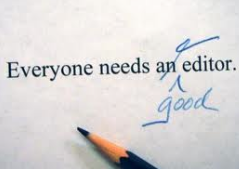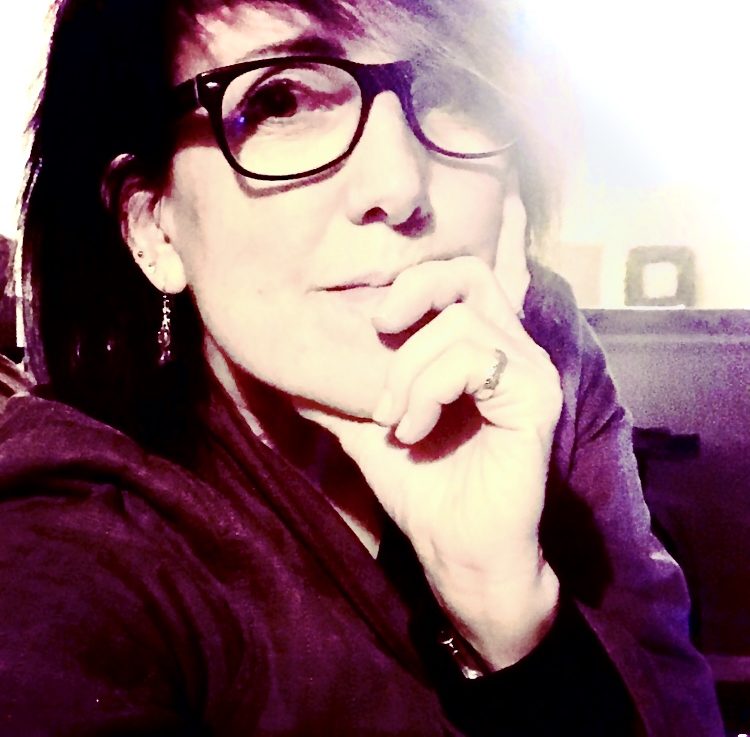I’m in the middle of an editing project, and editing is popcorning all over my brain cells. So if you’re serious about editing your written work well, then this one’s for you.
Here we go.

And editing takes form in three ways:
Details.
Content.
And rhythm & sound.
If you want to be a fabulous self editor, then you’ll need to know all three.
1. Details…
Just about anyone who knows punctuation and grammar well can edit for details. A period here, a comma there. No, a semicolon does not work there. Yes, in this case, the question mark goes outside the quotation marks. No, you can’t put the words not only in your sentence without but also. The style guide says so, and we follow the rules.
So many people believe that they know the rules. They even charge money for “professional editing” but, in reality, don’t know what they’re doing.
Yeah, this is a pet peeve of mine.
I’m currently editing work that another “editor” did already, and I’m horrified — because the details that this person missed are details that I teach middle schoolers. I’m setting my own record for how many times I cringe in one sitting. GAH.
Please. Do yourself a favor that lasts for years to come. Learn the rules. They’re finite.
And please. If you don’t know the rules really well, then don’t call yourself an editor. Polish your ability, first. Then take on the job.
2. Content…
Editing for content is much harder than editing for details. It’s harder to take a run-on sentence and make it concise. It’s even harder to realize when something’s missing and ask the author to add details.
In order to write well, you have to know what I call reader questions.
Reader questions are those questions that pop into the reader’s mind — the next-step info that the reader naturally wants to know, from sentence to sentence.
If I said, “I had a fabulous day,” your reader question is, “Yeah? What made it so fabulous?” So the next sentence that I write needs to answer the question and tell you what made it fabulous.
Basic.
If I said, “We went to the beach,” you might want to know, “What beach? How long were you there? What kind of things did you do?” Each of these questions is valid — and each one comes in rapid-fire response.
The good writer answers these questions linearly, in the order that they pop into the reader’s mind. (Yes, writers have to be mind-readers.)
Most authors and writers (of all kinds) miss info. They skip important stuff. Since the idea is clear in your own mind, you think that the readers get it, too.
But they don’t.
Editing for content is knowing reader questions, identifying what’s missing, seeing what’s out of order, and identifying what’s too much info (the infamous rabbit trails).
The best editors can take text, assess content needs right away, and understand what parts of the puzzle need to be arranged, removed, and added.
3. Rhythm & Sound…
Editing for rhythm and sound is, I believe, the hardest editing of all. Poets, I think you know more about editing for rhythm and sound than anyone.
It’s all about what you feel and hear.
Words:
* The word choice matters. (A new “flavor” of a word might be stronger.)
* The sounds of words matter. (One word’s assonance, consonance, or percussiveness might sound better, next to another.)
* The lengths of words matter. (One word might feel better, next to another, because it stops the sound with a /p/ or moves the reader forward with an /m/.)
Sentences:
* Sentence lengths matter. (Short, medium-length, or long — each sentence has a feel to it.)
* Sentence sound matters. (Sentences are like music. Really.)
Paragraphs:
* The way that sentences are arranged in the paragraph matter. (The combination of sentence lengths can increase, decrease, or keep steady the reader’s momentum.)
The best editors focus on rhythm and sound. And if you want to be a great self-editor, then focusing on rhythm and sound will make it happen for you.
Read John Gardner‘s works. He’s brilliant with these kinds of things.
So.
Writer.
Become an editor in all three ways, for your own work —
in details, content, and rhythm & sound.
It matters.
(And I want you to be successful.)
* Thup


Reblogged this on Writing to be Read and commented:
Some great editing advice from an author I call a friend.
Wow! This one’s a keeper. So helpful. Thanks for sharing. Wish I’d had a teacher like you! (I might have gotten more than a 3 out of 10 for grammar on the first manuscript I submitted!)
Good stuff, Erin. I agree with everything, except the “not only-but also” parallel. “Also” can be left off. “But” can also be left off where it’s implied. “Not only did he stop short, he fainted.” As you know, rules are tricky.
I agree, Stuart: Tricky’s the word. Because each type of writing has its own rules, guidelines, and rather-haves, in the end, we go with what’s most clear (and gets the message or desired feeling across).
Poetry, fiction, nonfiction — each brings its own reader expectations and allowables (new word, ha). Formal/academic writing, including research writing and education pieces, definitely needs the not only-but also pair (as did the type of writing I was editing when I wrote this post… it was an anthology by a group of academics). Fiction has its own rules (and lack thereof), and dialogue (both external and internal) makes its own meandering path (in other words, toss out/get rid of “but also” at will).
Good additions to the post. Bravo — I appreciate your feedback.
*Thup
Erin